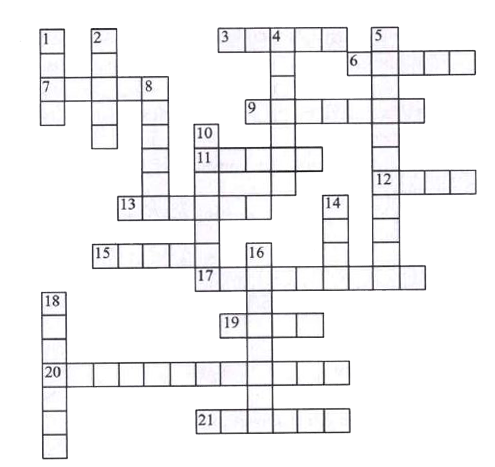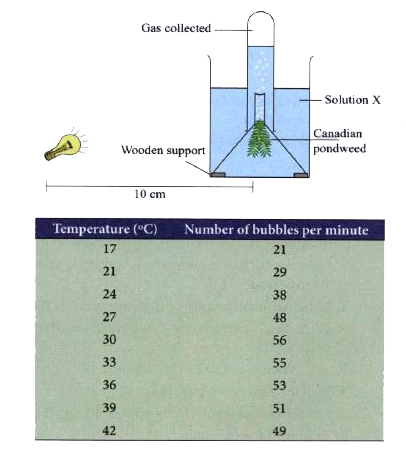Complete Solutions to CONSOLIDATED EXERCISE of chapter NUTRITION IN PLANTS AND ANIMALS of Class 10 book with complete answers and questions
| Class 10 | BIOLOGY |
| Chapter | NUTRITION IN PLANTS AND ANIMALS |
| CENGAGE BIOLOGY | CONSOLIDATED EXERCISE |
| Number Of Questions | 9 |
| Academic Year | 2023-24 |
Complete the crossword puzzle using the clues given below:
Across
3. Scientific name for fat and oil. [5]
6. These are used for chewing food. [5]
7. Intestine that absorbs water into bloodstream. [5]
9. Nutrient group containing meat, eggs and beans. [7]
11. Type of acid that makes up proteins. [5]
12. Hole through which faeces pass out of the body. [4]
13. Storage organ for faeces. [6]
15. Fingerlike projections of small intestine. [5]
17. Scientific name for fibre. [9]
19. Hydrochloric__ is made in the stomach. [4]
20. Nutrient group containing sugar, starch and cellulose. [12]
21. Fluid in mouth. [6]
Down
1. Green chemical that breaks fats into smaller globules. [4]
2. The duodenum is the _ part of the small intestine. [5]
4. Organ at back of mouth where both food and air may pass. [7] 5. Muscular contractions of digestive tract. [11]
8. Chemical that breaks food into smaller particles .[6] 10.__ juice is found in the stomach. [7]
14. Bladder that stores bile. [4]
16. Fats are broken down to fatty acids and __ [8]
18. Example of simple sugar. [7]

View SolutionDiagram below depicts an experiment to find the effect of temperature on the rate of photosynthesis. The average number of bubbles per minute at each temperature is given in the table.

Plot a graph to show the relation between the rate of photosynthesis and temperature.
View SolutionDiagram below depicts an experiment to find the effect of temperature on the rate of photosynthesis. The average number of bubbles per minute at each temperature is given in the table.

Describe and explain the change in rate of photosynthesis as the temperature is changed
(i) from `17^@C` to `30^@C`.
(ii) from `33^@C` to `40^@C`.
View SolutionDiagram below depicts an experiment to find the effect of temperature on the rate of photosynthesis. The average number of bubbles per minute at each temperature is given in the table.

Why should the funnel be raised by wooden supports?
View SolutionDiagram below depicts an experiment to find the effect of temperature on the rate of photosynthesis. The average number of bubbles per minute at each temperature is given in the table.

(i) Name the gas collected.
(ii) What test would you do to identify the gas?
(iii) What is the importance of this gas to other organisms in the ecosystem?
View SolutionMatch the following :

View SolutionMatch the following :

View SolutionAssertion. Gall bladder may develop small pebbles the gall stones, in it.
Reason. Cholesterol sometimes precipitates as crystals and combines with bile salts and pigments forming stones.
View SolutionLabel the following diagram using these labels: Water, carbohydrate, carbon dioxide, oxygen , ATP, ADP+(Pi), NADPH, and `NADP^+`

View Solution
CONSOLIDATED EXERCISE questions and complete solutions for chapter NUTRITION IN PLANTS AND ANIMALS of CENGAGE BIOLOGY of Class 10